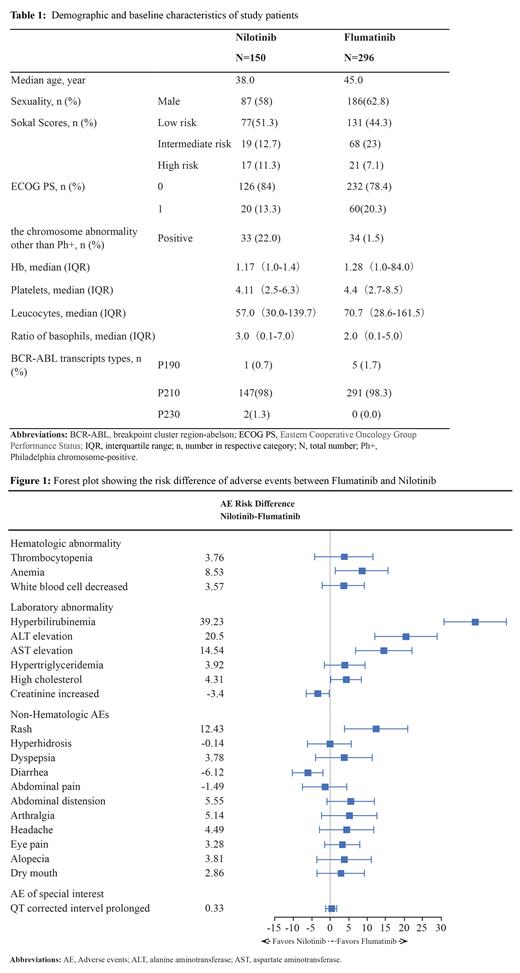Introduction
Tyrosine kinase inhibitors (TKIs) have considerably improved the long-term clinical outcomes in patients with chronic phase chronic myeloid leukemia (CML-CP). Most of these patients receive 1 st generation TKI imatinib as first-line therapy; however, an increasing number of patients are now receiving 2 nd generation TKIs as first-line therapy, because of the more potent BCR-ABL1 inhibition with proven efficacy in patients resistant or intolerant to imatinib. Flumatinib is a novel 2 nd generation BCR-ABL1 TKI with promising efficacy and manageable safety in newly diagnosed CML-CP. Compared to imatinib, patients treated with flumatinib have achieved significantly higher rates of 12-month major molecular response (MMR) and complete cytogenetic response were observed in patients with CML-CP and that too within a shorter time duration. Though there have been many studies comparing 2 nd generation TKIs vs imatinib in CML-CP, studies comparing clinical outcomes between different 2 nd generation TKIs are scarce. Here, we report the real-world effectiveness and safety of flumatinib and nilotinib in patients with newly diagnosed CML-CP.
Methods
In this study, adult patients (≥18 years old) with newly diagnosed Philadelphia chromosome-positive (Ph+) CML-CP who received either 300 mg nilotinib twice daily or 600 mg flumatinib once daily, were included, with a follow-up duration of roughly 3 years (NCT04739826). The primary endpoint was the rate of MMR at 12 months as defined by European LeukemiaNet 2020 recommendations (BCR-ABL1 transcript level ≤0.1% in peripheral blood on RT-PCR assay on International Scale [IS]).The secondary endpoints were the rate of early molecular response (EMR) at 3 months (BCR-ABL1 IS ≤10%), the rate of molecular response at 6 months (BCR-ABL1 IS ≤ 1%) and safety (adverse events [AEs] reports in accordance to Common Terminology Criteria for Adverse Events, version 4.03).
Results
A total of 446 patients were enrolled in the study between November 2020 and August 2022, of which 150 and 296 patients were enrolled in nilotinib and flumatinib groups, respectively. The baseline characteristics were comparable between the two groups (Table 1).
No significant difference in the rate of MMR was observed at 12 months between nilotinib and flumatinib (78% vs 80%; P=0.68) . Similarly, no significant difference was observed in the rate of EMR at 3 months (85% vs 89%; P=0.26) and the rate of optimal molecular response at 6 months (93% vs 92%; P=0.70; BCR-ABL1 is ≤1%) between the two groups. The overall safety profile was similar between the two groups. However, hyperbilirubinemia (47% vs 7%), increased ALT (33% vs 12%), increased AST (24% vs 9%), rash (30% vs 18%) and anemia (19% vs 10%) were more frequent in nilotinib group than flumatinib group, whereas diarrhea was lower in nilotinib than flumatinib (2.7% vs 8.8%). The incidence rate of grade 3-4 AEs were reported to be 13% in nilotinib group and 10% in flumatinib group. The safety of flumatinib was more favorable compared to nilotinib in terms of hepatic toxicities, skin toxicities, etc. (Figure 1).
Conclusion
The efficacy of flumatinib is comparable to nilotinib in Chinese patients with newly diagnosed Ph+ CML-CP. The overall incidences of grade 3-4 AEs were also accessible for the two drugs, nevertheless, a few AEs inclusively hepatic toxicity, anemia and skin toxicity were remarkably lower with flumatinib intervention.
Disclosures
No relevant conflicts of interest to declare.


This feature is available to Subscribers Only
Sign In or Create an Account Close Modal